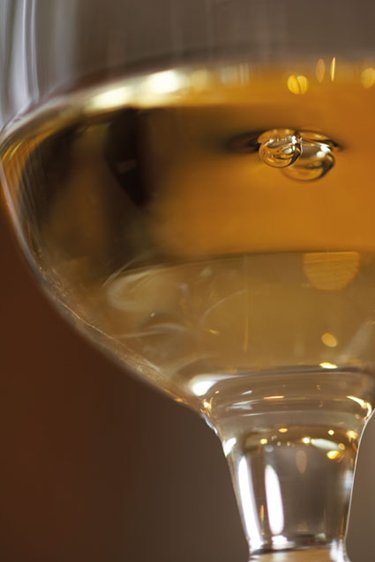New World: Chardonnay
Signs of real progress from South Africa and, particularly, Australia. The Americas, however, seems over-wedded to sweet fruit and oak
The ongoing battle between Sauvignon Blanc and Chardonnay for ‘top New World white’ category has been something of a feature of the Sommelier Wine Awards. When the competition started in 2007, Chardonnay was clearly top dog, but the shift towards freshness over roundness has seen something of a Charge of the Gooseberry Brigade over the past few years; once again Chardonnay scored fewer places on the Gold List than its nimble-footed peer.
While there is a certain amount of anti-Chardonnay sentiment among the public, it’s less prevalent in the restaurant community – not least because it’s more useful as a food match than Sauvignon.
But while our tasters were happy in principle to list a good number of Chardonnays, those wines had to be right, which meant freshness and balance, rather than syrupy fruit and oak slathered on like Nutella on a six-year-old’s sandwich.
 And sadly, way, way too many New World producers still haven’t got the message.
And sadly, way, way too many New World producers still haven’t got the message.
Chile, for instance, seems to be in a bit of a nosedive with this grape at the moment. There are good, interesting examples being made in places like Limarí, but we didn’t see enough of them here. No coincidence that both medal winners were from cool areas, but the country has a long way to go with this grape, with ‘lack of freshness’ and ‘lack of intensity’ repeated criticisms.
Argentina was no better, with the added disadvantage of being damned expensive. ‘Price points were really high, and comparing what you can get from Burgundy, we really struggled to find anything to recommend here, there was no elegance in the wines, they were big and unwieldy and over-priced,’ said Bread Street Kitchen’s Ram Chhetri.
Only one medal was a poor haul for a country that really needs to develop a workable white alternative to Malbec. ‘They should go back to the drawing board,’ snarled team leader Angela Reddin. ‘Too many of these were fat, flabby, clumsy wines with very few redeeming features at all.’
You’d think that New Zealand, with its cooler climate, would be a perfect hunting ground for more European styles. And we know they exist out there because we’ve tried them. But they weren’t entered for this year’s Sommelier Wine Awards. Instead, we got way too many examples where a muffin top of oak bulged over wobbling, fruity buttocks. ‘It’s like Adelaide Hills 10 years ago,’ sighed one taster.
No surprise that the most toned example, gym bunny Trinity Hill, was the country’s only medal.
What was a surprise, however, was the feedback from the South African versions. A movement is clearly taking place here, it’s just that not everyone has caught on to it yet. ‘The ones we didn’t like were sweet and nasty,’ said team leader Jade Koch. ‘Those that got medals had sun, but also brightness and freshness.’
While a good number were removed at the early stages, two Gold-listed wines was an impressive performance for the Saffers. The Lourensford was probably the bargain of the entire category, while Coq d’Argent’s Olivier Marie described the £15 De Wetshof as ‘Meursault-like’.
That said, the big story here was Australia. Our tasters have been tracking the development of Aussie Chardonnay since the Sommelier Wine Awards started in 2007. Then, it was all big fruit and big oak. But the past four years have seen big changes, with an increased emphasis on freshness and minerality.
Indeed, there was a feeling last year that the pendulum might have swung back too far the other way, with a masochistic eschewal of malo and suicidally early picking occasionally giving wines that wouldn’t be out of place in a line-up of wet-vintage Chablis. A bit like abandoning karaoke for Kafka.
This year, however, the balance was better – perhaps One Direction singing the works of Jean-Paul Sartre…?
‘There were some really well-balanced wines here, and food-friendly styles,’ said Galvin La Chapelle’s Gregg Lambert. ‘And plenty that would come in at between £40 and £50 on the list, so looking very good in comparison with Burgundy; certainly wines that we could sell.’
Good value or not, there were still practicalities to be ironed out, not least managing the expectations of customers who order something expecting a metaphorical glass of surf shirts and sunnies, and end up with a finely tailored suit, but this was felt to be a conversation worth having.
‘The Australian wines are better than they have ever been – just not what you expect,’ said Hakkasan’s Christine Parkinson. ‘There was some good stuff here. We saw real restraint – you really have to look quite hard for fruit bombs now.’
‘This was a great flight, with a really good range of wines, and showed how good modern Australian Chardonnay can be.’
Gregg Lambert, Galvin La Chapelle
‘There’s only one New Zealand wine picked up a medal. That’s really disappointing because there’s some really great New Zealand Chardonnay out there. It’s as if they almost forget there are good examples other than Sauvignon Blanc.’
Simon Woods, team leader